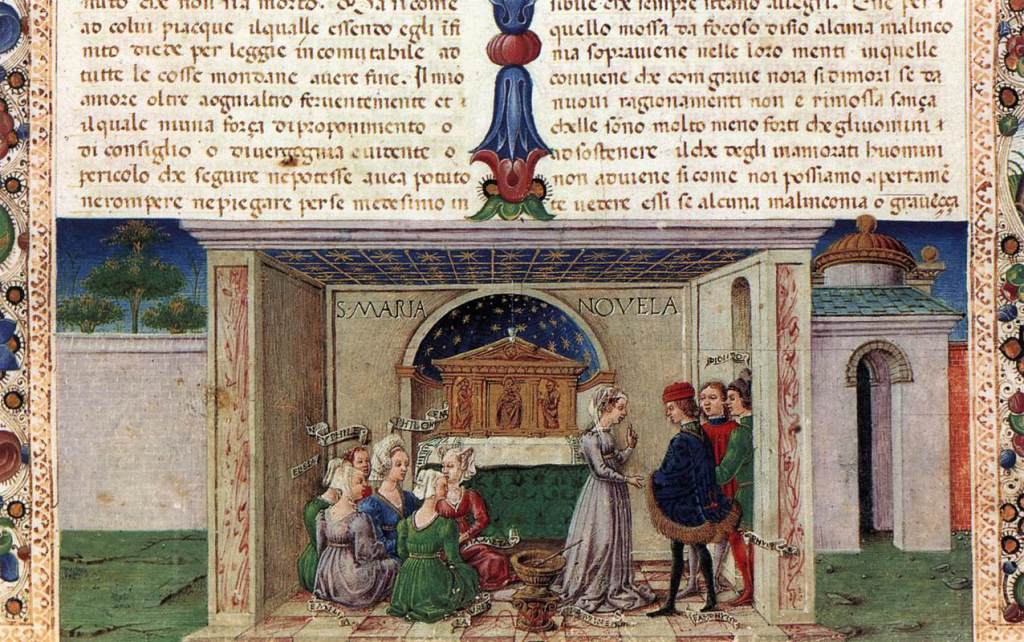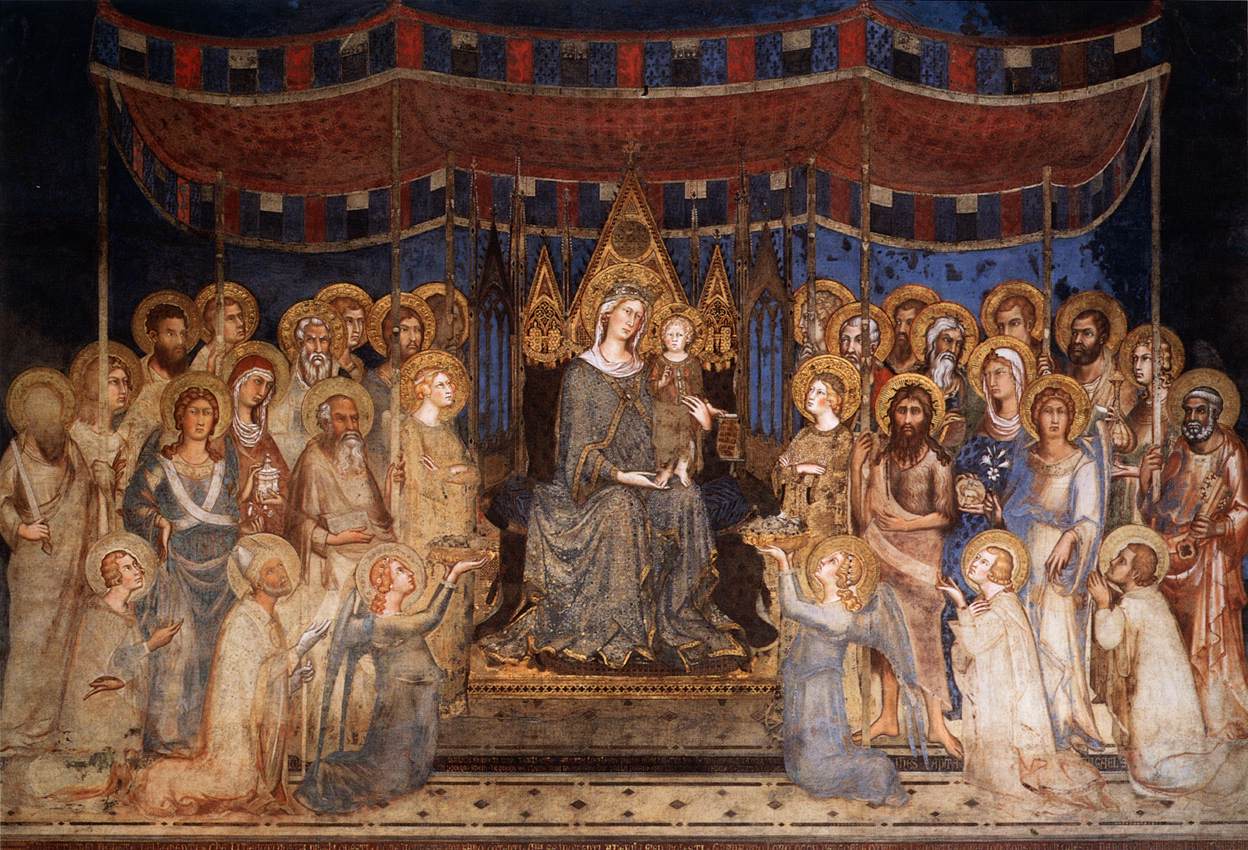Global cooling, plague, war, famine, social unrest
Like many cities on the Italian Peninsula, Siena was thriving at the beginning of the trecento. The frescoes of Ambrogio Lorenzetti on the walls of Siena’s Palazzo Pubblico show how vibrant the city was before the onset of the many 14th-century crises.
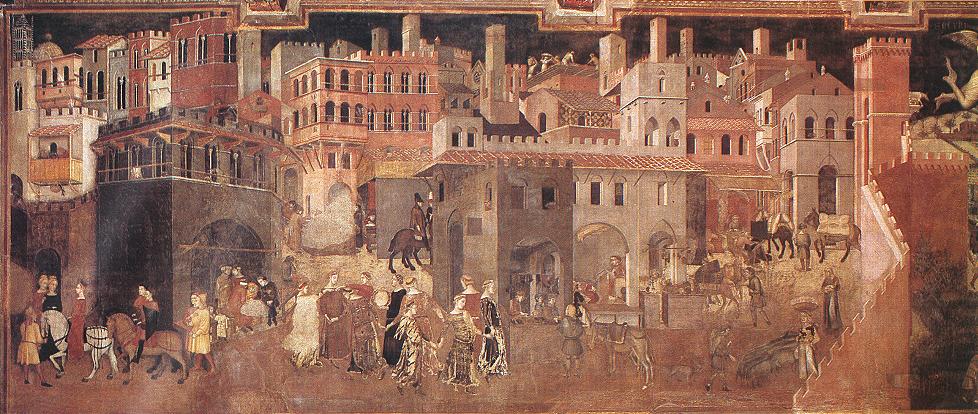
Lorenzetti portrays well-behaved nobles…
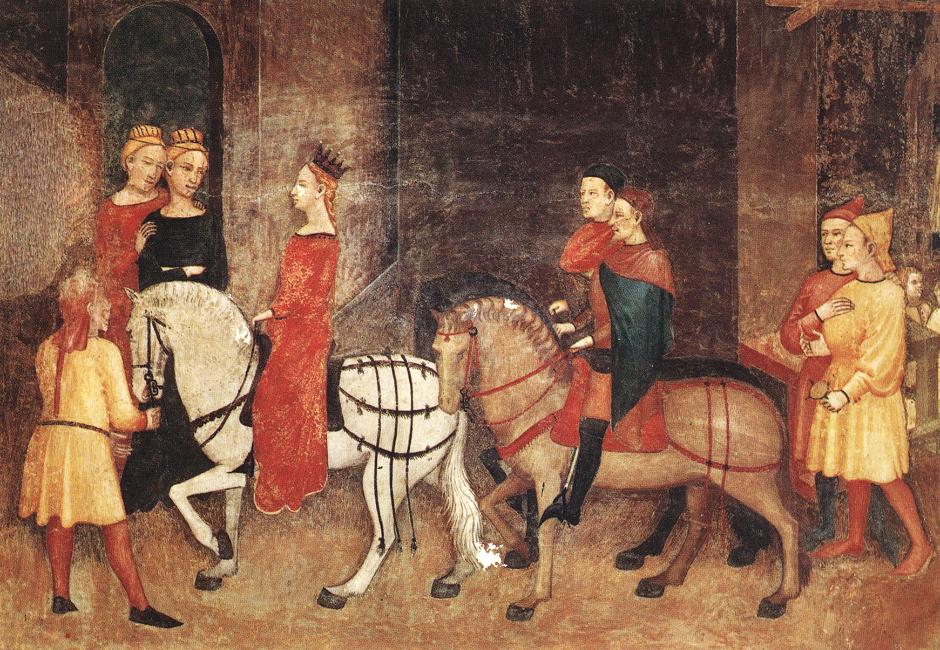
and dancing in the streets.
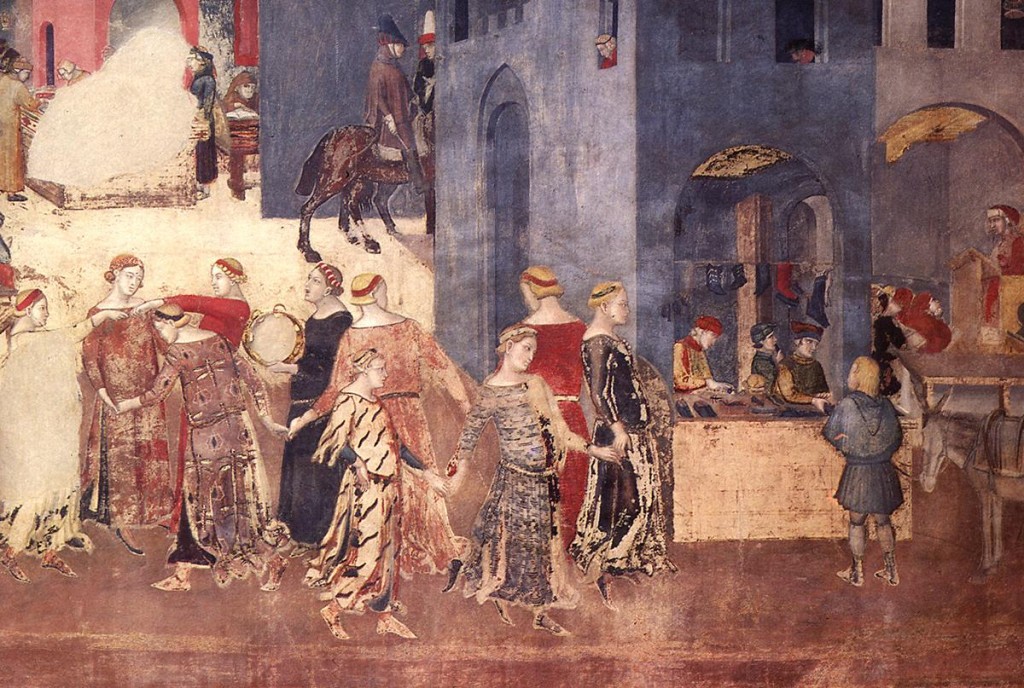
Justice, holding scales, presides over the city. On the left the evil are punished, and on the right, the good are rewarded
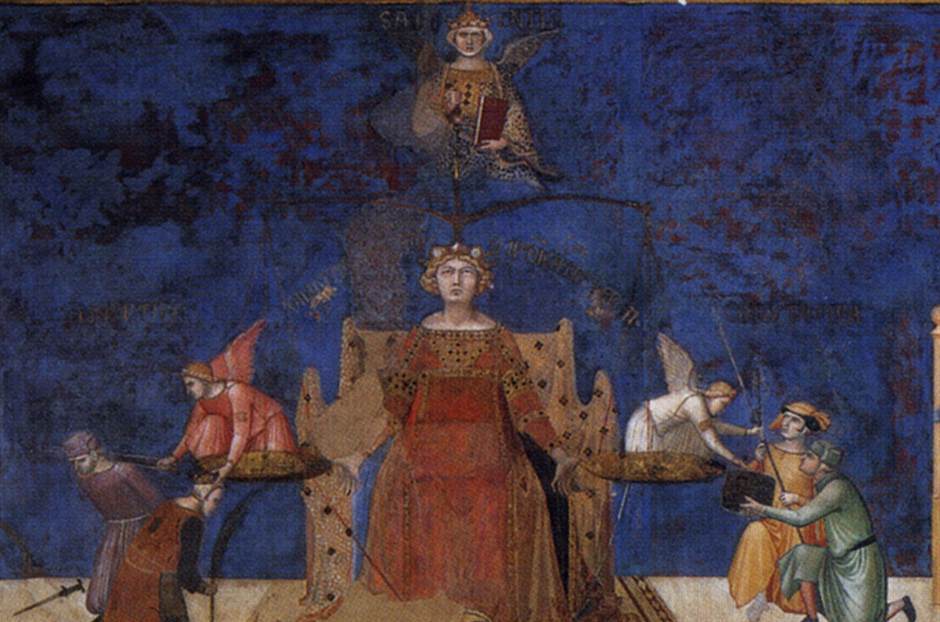
These frescoes decorated the walls of Siena’s city hall and was meant to inspire its officials:
Concord is depicted guiding the city council members.
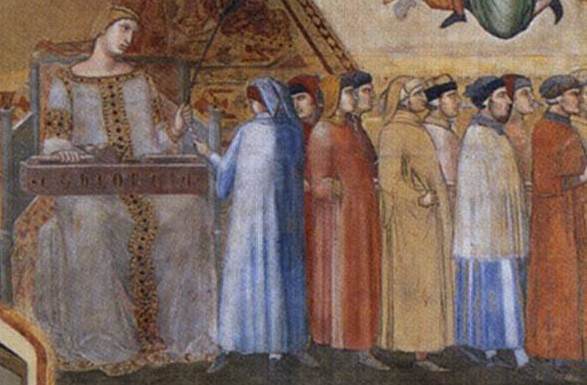
This is what the countryside looked like in good times:
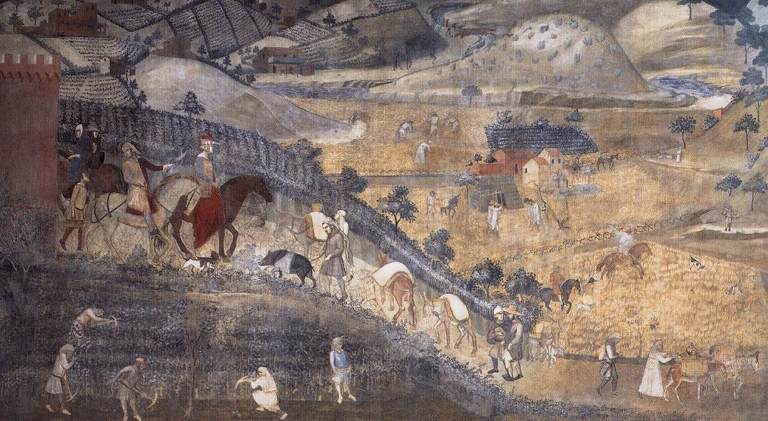
The companion fresco represents the devastated countryside with bands of unemployed mercenary soldiers known as condottieri, roaming and plundering.
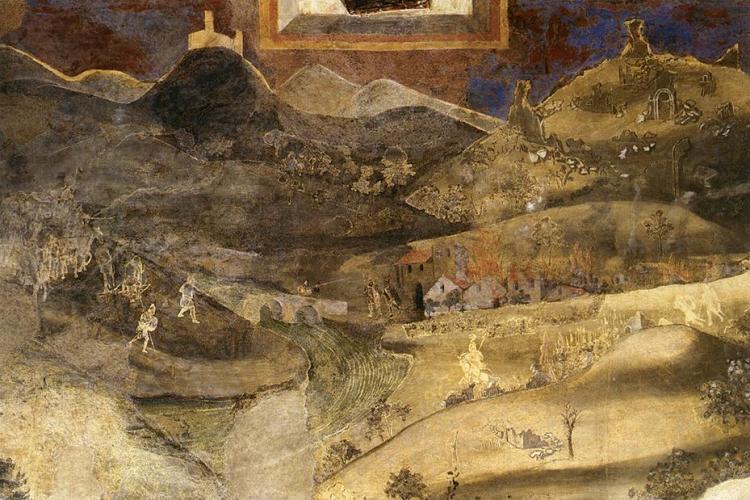
Images of two famous condottieri


Speaking of devastation, here is a portion of what remains of Buffalmacco’s Triumph of Death fresco in the Camposanto in Pisa, which was badly damaged by Allied bombing during World War II:
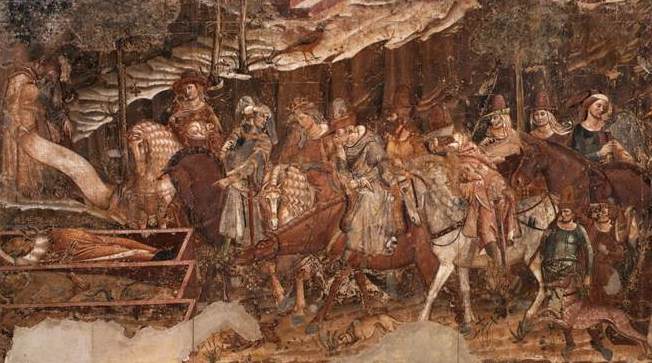
Here are photos of what Pisa’s lovely Camposanto after the bombing and what it looks like today:


In the first half of the 14th century, Florentine painters followed in the footsteps of Giotto:
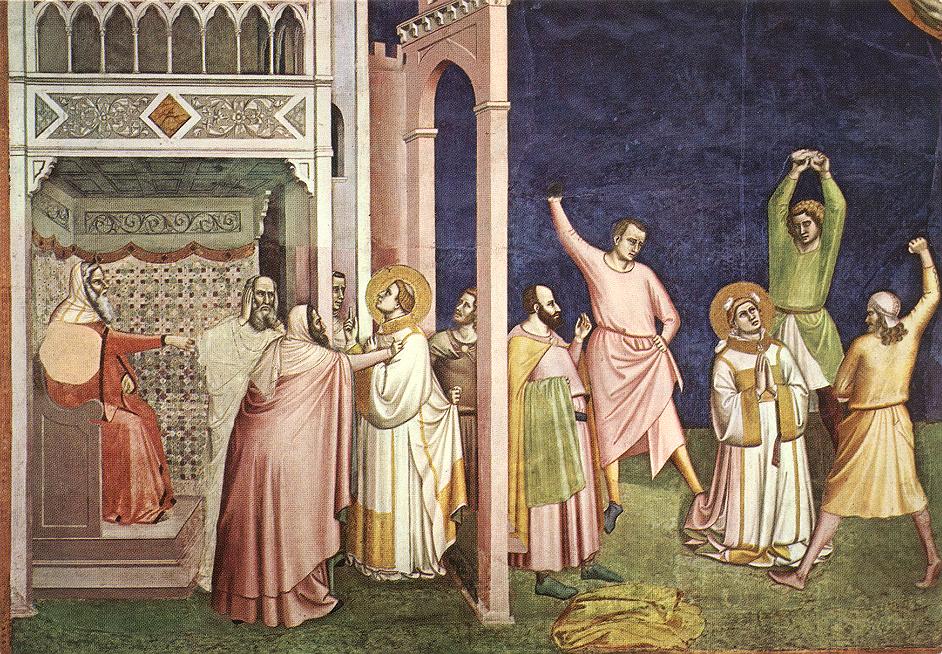
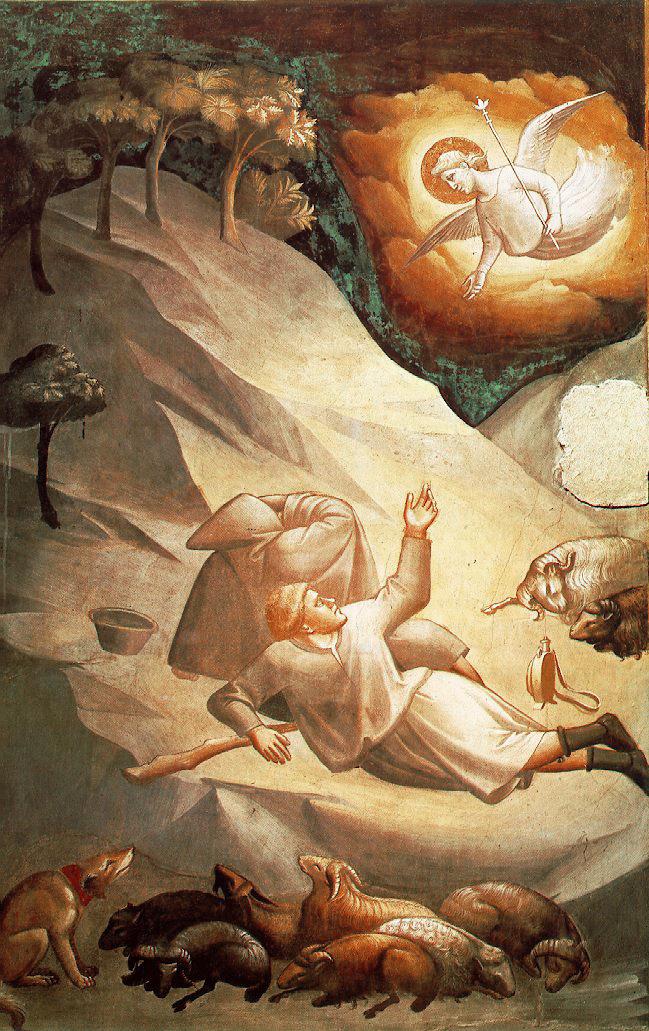
In Siena, artists were inspired by the master Duccio di Buoninsegna
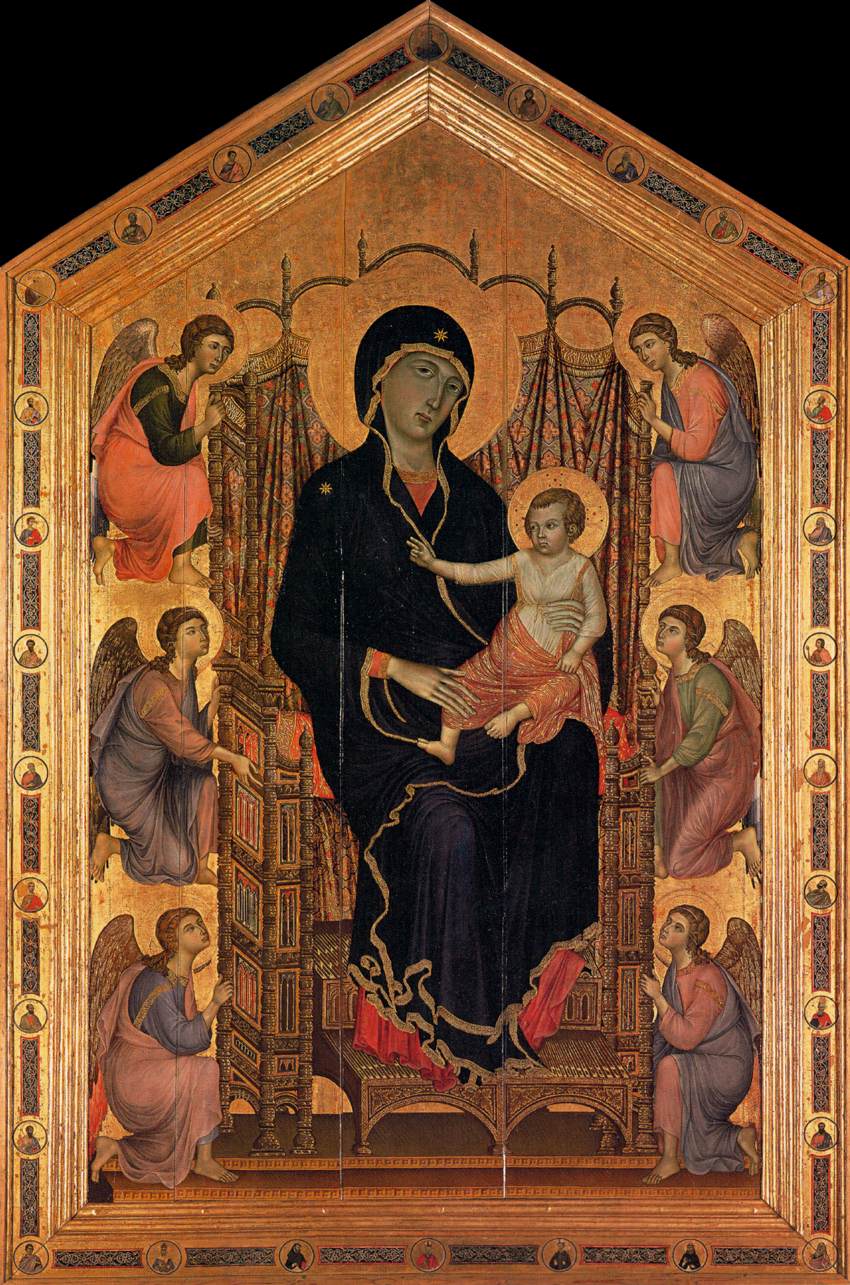
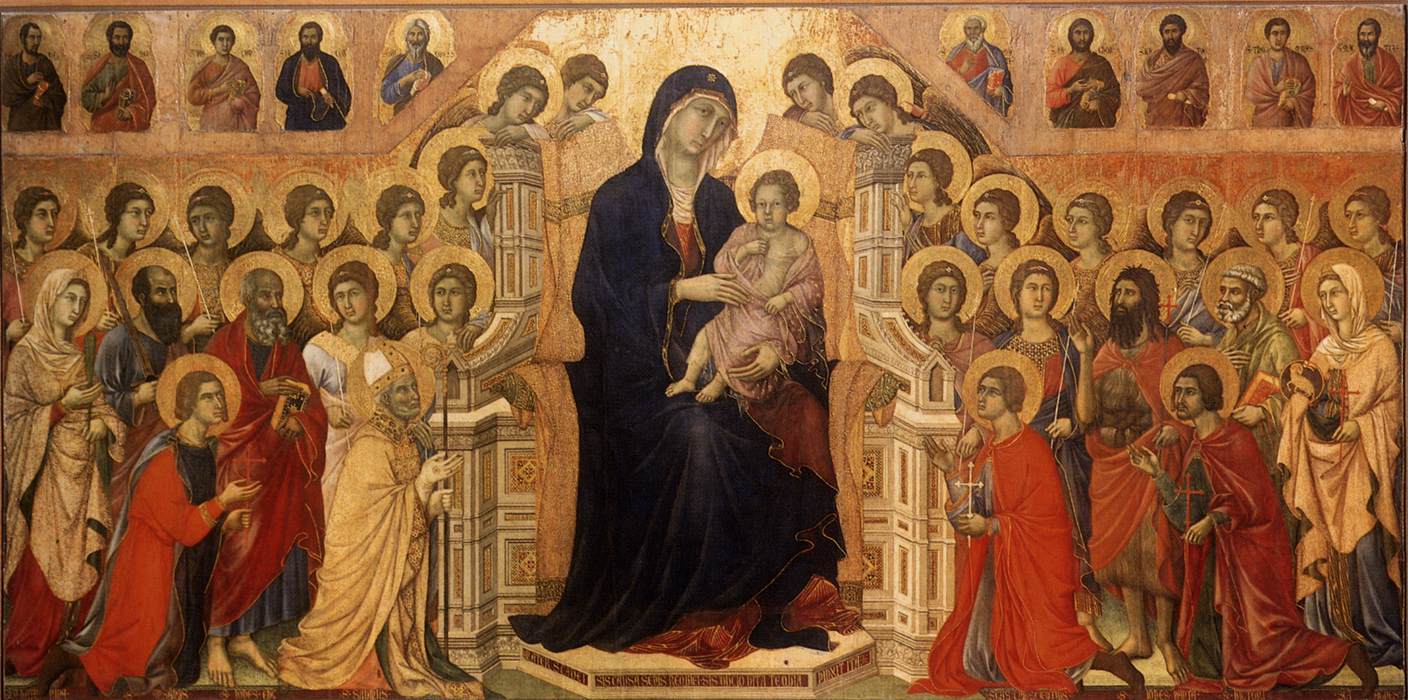
Simone Martini Maestà
Though like the rest of the population, many artists perished in the Black Death, Agnolo Gaddi was one who survived:
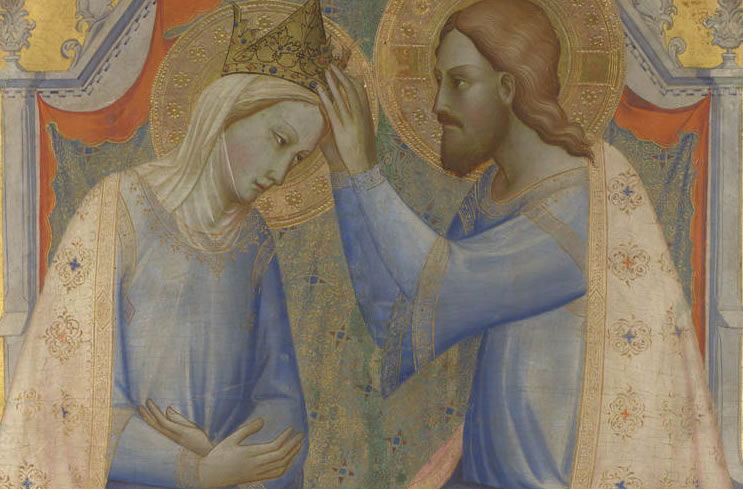
Some painters in the 14th century began to paint in a more remote, less naturalistic style that hearkened back to older artistic works:
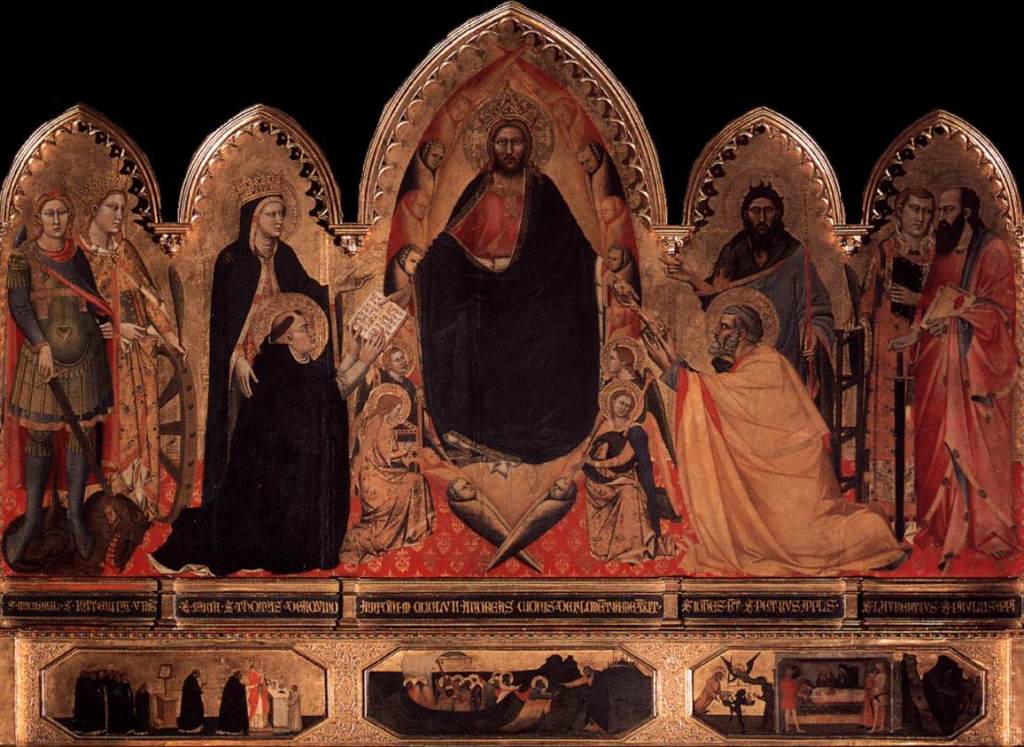
Orcagna Strozzi Altarpiece, c. 1357, Santa Maria Novella, Florence
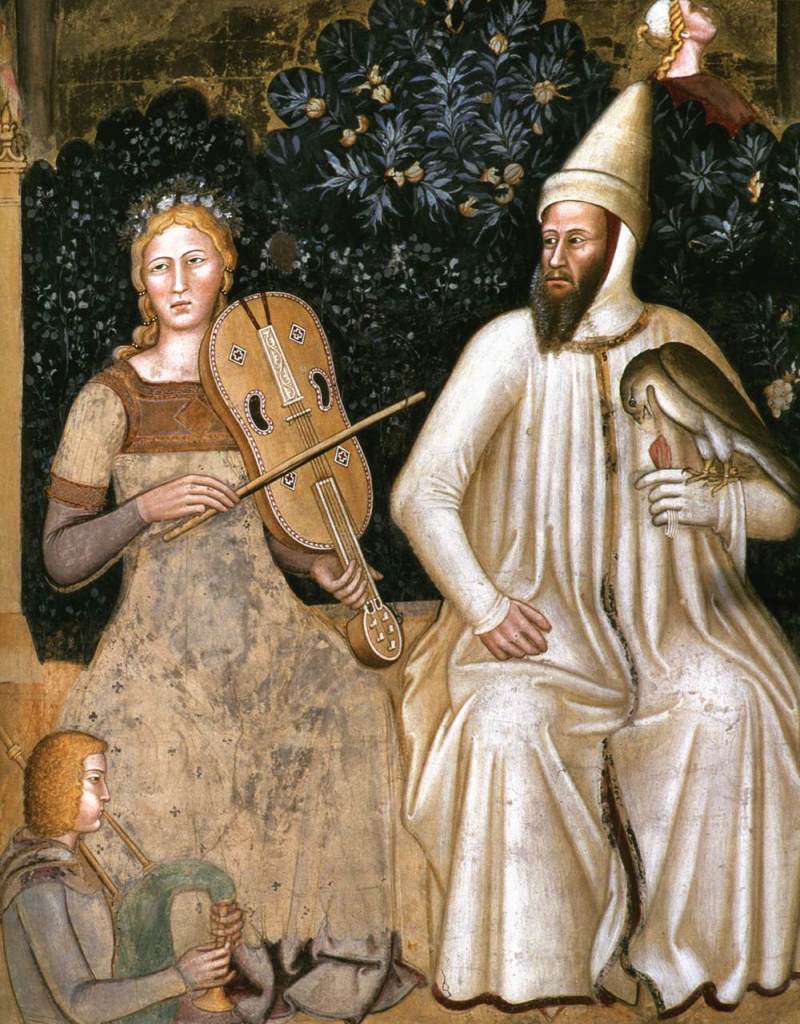
Andrea da Firenze Spanish Chapel frescoes, detail, c.1366, Santa Maria Novella, Florence
Art and society rebounded after the Black Death.
In The Decameron, written around 1350, Giovanni Boccaccio celebrates the vigorous energy of his world.
